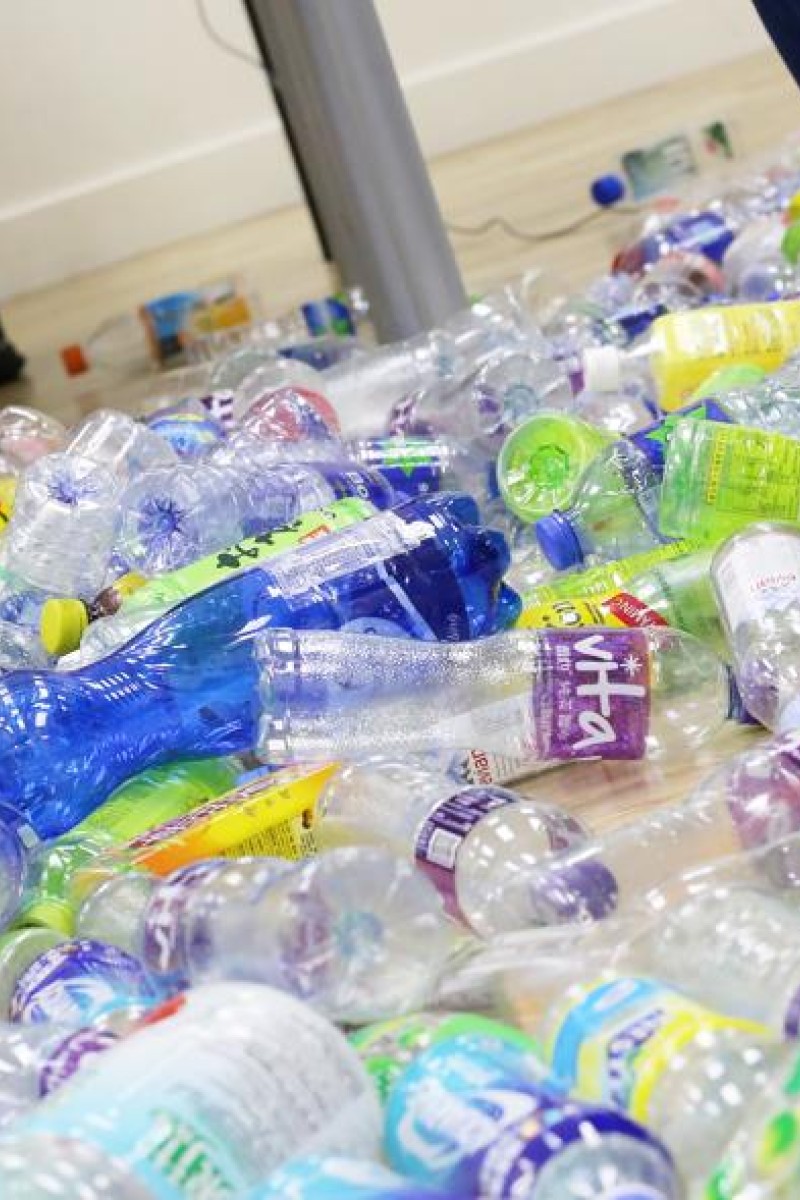
Five ways to live a life with less plastic waste in Hong Kong
Our landfills are overflowing with unnecessary plastic packaging, but it doesn’t have to be the case. Here are five ways that plastic is still being used in our everyday life and how we can put a stop to it immediately
 Single-use plastic bottles are bad for the environment and are a huge source of waste filling up our landfills.
Single-use plastic bottles are bad for the environment and are a huge source of waste filling up our landfills.Let’s face it: Hong Kong has a serious addiction to plastic. It’s so bad that we see individually plastic-wrapped fruit in the supermarket, when nature already gave that banana, orange or apple its own protective packaging.
According to 2014 data from the Environmental Protection Department, 1,200 and 2,000 tonnes of plastic are thrown away every day in Hong Kong. You throw that plastic bottle into the bin and don’t expect to see it again. But it will either sit in landfill for 450 years or wash up on a beach if the rubbish isn’t properly processed – around 80 per cent of plastic waste found in the sea comes from the land.
Many people believe that plastic is food-safe and clean, but it can actually leak toxic chemicals into our food and drinks. Using glass lunchboxes and reusable metal water bottles keeps you safe, and makes sure another piece of useless plastic doesn’t end up in a landfill. Avoiding plastic takes a bit of planning, but involves minimal hassle and it will have many benefits for Hong Kong’s environment and ecosystems.
Straws
The problem: Next time you’re in a cafe or takeaway, think before putting that plastic tube into your drink. Straws are extremely wasteful and often end up on the floor or in the bodies of sea creatures. If you’re a straw addict, or are worried about getting a face full of ice, try using a metal straw.
What to do: Say no to plastic straws (especially the ones that come wrapped in more plastic). Plastic Free Seas, a Hong Kong organisation, sells a metal cutlery
kit (HK$110) that includes a straw, straw cleaner, chopsticks, and a fork and spoon that fits neatly in your bag.
Where to find: plasticfreeseas.org
Polystyrene
The problem: Don’t use polystyrene containers. Just don’t. We’ll only see the end of single-use plastic if we stamp down on lazy restaurants and food producers that use this environmentally-damaging material. You only have to go to Aberdeen fish market to see how the sea and pavements are covered in white chunks due to careless vendors.
What to do: Bring a small container with you if there’s a chance you’ll be visiting a takeaway or dai pai dong. While ordering, ask them to use the box you brought. Write to the restaurant to tell them what the problem is and ask whether they’ll start using more sustainable packaging.
Where to find: Supermarkets and shops like Ikea and Japan Home Centre sell a range of glass food containers from HK$24.
Plastic bags
The problem: It was a wise move when the government brought in the plastic bag charge, but that doesn’t stop plastic bags still being used unnecessarily. Cold products like ice cream, yogurt or milk are often put in a clear plastic bag at the supermarket checkout, while wet markets will often give you a different bag for each item you buy, and restaurants like McDonald’s will put your drink in one.
What to do: Just say no. Take organic cotton tote bags or a really big rucksack to the wet market or supermarket.
Where to find: Lots of shops and supermarkets sell cheap cotton bags, but Muji has some seriously smart ones (around HK$200).
Toothbrushes
The problem: After the kitchen, the bathroom is the place in the house that creates the most plastic waste. Soap and shampoo bottles, toilet paper and cleaning products all come wrapped in plastic, and toothbrushes never get recycled. If everyone in Hong Kong changes their brush every three to four months, that’s around 25 million toothbrushes heading to landfills every year.
What to do: Bamboo toothbrushes are recyclable, biodegradable, naturally antibacterial, and won’t leak poisonous chemicals into your body.
Where to find: Locofama in Sai Ying Pun, from HK$18.
Water bottles
The problem: Bottles are one of the most obvious sources of single-use plastic. Most of us know that single-use plastic bottles are bad news for the environment, but this doesn’t stop everyone from rushing to 7-Eleven for chilled drinks when the sun comes out.
What to do: Carry a BPA-free plastic, stainless steel or aluminium bottle of water with you. Download the Water For Free app (free) to find the city’s public drinking fountains.
Where to find: Lots of places sell reusable bottles. Plastic Free Seas has a great one for HK$150, or there’s Lifestraw at lifeplus.hk for HK$238. Alternatively, check out how you can win a smart reusable drinks container.
